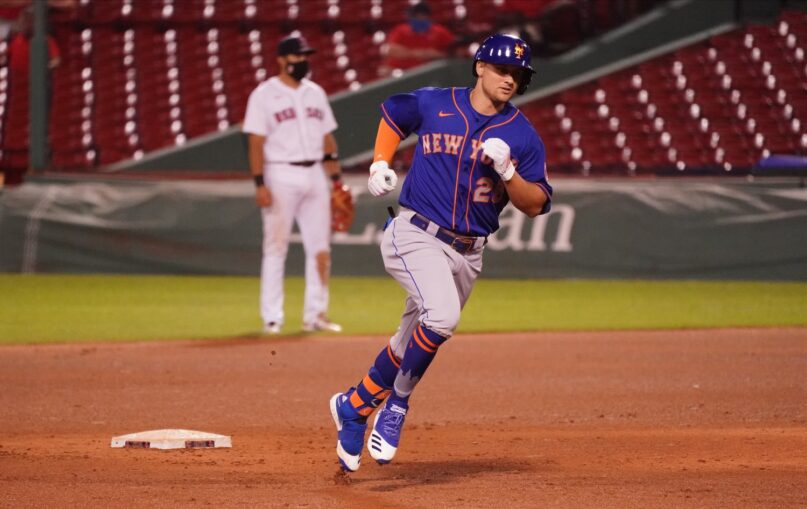
After an explosive breakout in 2019, the New York Mets’ — I guess we’ll call him a third baseman? — J.D. Davis experienced a noticeable slowdown in production last season.
Without much of a glove to speak of, an elite batted-ball profile as his calling card, and the final decision on the National League’s potential use of the designated hitter again in 2021 still being deliberated (*cough* held as ransom; hey, who said that?), Davis finds himself in a precarious position heading into 2021.
Between Brandon Nimmo and Dominic Smith, left field will be covered. Jeff McNeil could be playing second base in Robinson Cano‘s absence, with the ability to shift over left field (+1 OAA in LF last season) or third base. What is less known is where all of that leaves Davis.
What we do know is that J.D. Davis is gonna have to earn his plate appearances this season.
In his first season in Flushing, the 27-year-old hit .307/.369/.527, with 22 home runs and 22 doubles (136 wRC+, 2.4 fWAR, 453 plate appearances). But, as it tends to do, the tide turned.
Over 56 games in a COVID-shortened 2020 (229 PA), Davis hit .247/.371/.389 with six homers, 117 wRC+, and a 24.5% strikeout rate (up from 21.4 percent in 2019). His on-base percentage was still promising, but the season was generally a letdown.
Sure, Davis’ 2019 .355 BABIP may have been an untenable measuring stick, but his 90th percentile marks in both hard-hit rate (47.9 percent) and average exit velocity (91.5 MPH), as well as his pristine expected metrics (.317 xBA, top-one percent in MLB;.560 xSLG, top-eight percent), were no mirage.
Plus, they provided a viable hypothesis for Davis’ successes: the harder the contact, the better the chances of getting a hit — that’s just science. And Davis absolutely creams pitches, as noted above.
While Davis is still mashing to an extent — his 90.1 MPH average exit velocity and 45.2% hard-hit rate last season were both above 2020 MLB averages (88.3 MPH, 34.9% hard-hit) — and taking into account that, at the end of the day, this downturn was only a 60-game stretch, there’s still a lot to be encouraged about.
Davis’ glove leaves quite a bit to be desired, to say the least (-2 outs above average in left field last season; -3 OAA at third base), hence his no-man’s-land designation in the field. And herein lies the problem moving forward.
His offensive potential will continue to garner at-bats but at what point will his deficiencies in the field — or another, more complete player’s emergence, for example (hey, Andres Gimenez; oh, hello Luis Guillorme) — leave Davis as the odd-man-out?
The DH would help his situation — clearly — but that can’t be counted on at this point in the process. A healthy, productive Davis is a plus for this team, anyway you slice it. Whether he’s a bench cog or a starter, he can be a game-changer.
Come spring training, if Davis wants to re-entrench himself into the Mets’ everyday lineup, he’ll need to find his groove quickly and rediscover the form that got him here in the first place.















